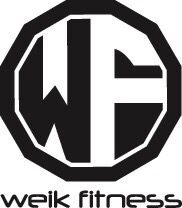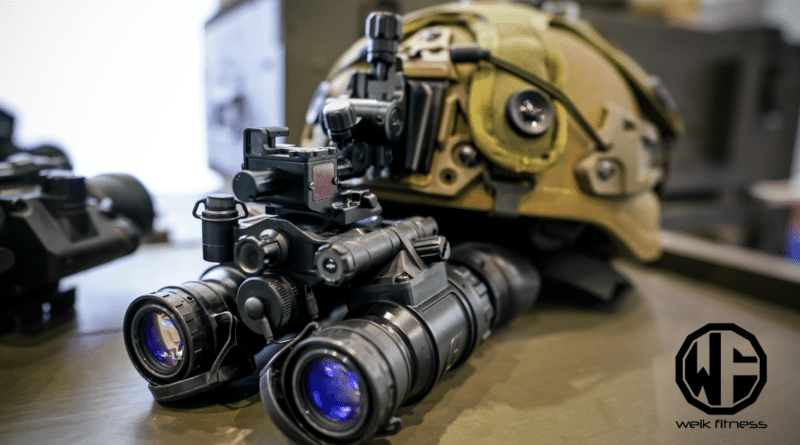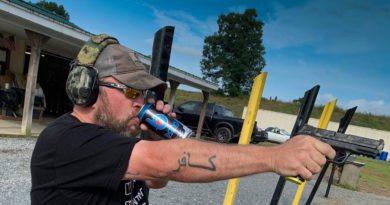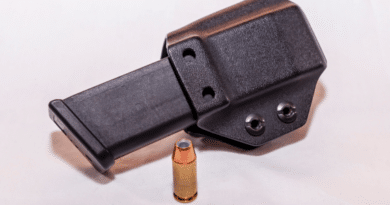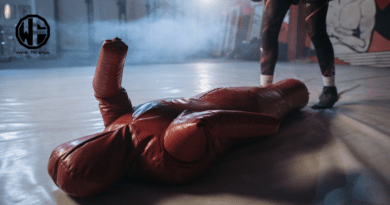Should Civilians Invest in a Ballistic Helmet?
Are you considered weird if you have a ballistic helmet? I don’t think so. Having a tactical helmet with NVG mounts where you can attach your NVGs is a great idea if you ask me.
We’ve all experienced concern about safety during challenging times. It’s natural to consider if purchasing a ballistic helmet could enhance protection for you and your family. After all, these helmets are designed to protect your head and the helmet features play a role in its ability to stop a bullet or projectile.
Ballistic helmets can provide some defense against bullets and flying debris. But is this equipment truly necessary for the average individual? This article will guide you through the advantages and disadvantages to help you determine if a ballistic helmet is appropriate for your circumstances.
It should also be noted that ballistic helmets are completely different from bump helmets that do not offer any sort of ballistic protection. We are also not associated with any helmet brands and make no money from any helmet purchase you make. This article is for informational purposes only to help educate you on the topic.
Table of contents
Key Takeaways
- Ballistic helmets protect against bullets and debris, with types like PASGT, MICH/ACH, FAST, ECH, and IHPS offering different features.
- Civilians may want helmets for safety in crises but must consider costs ($200-$2000+), comfort, and local laws before buying.
- Federal law allows most civilians to own ballistic helmets, but some states have extra rules, especially for people with criminal records.
- A good helmet fit is key for protection and comfort. The EXFIL® Ballistic helmet comes in two sizes for heads 20.5 to 24.75 inches around.
- While helmets can boost safety, proper training and other gear might be better for some people’s needs and budgets.

Understanding Ballistic Helmets
Ballistic helmets offer vital head protection. They come in various types and levels of defense.
Types of Ballistic Helmets
We offer various types of ballistic helmets for personal safety. Each type has unique features to suit different needs.
- PASGT Helmets: These classic “K-pot” style helmets give full head coverage. They protect against 9mm rounds and shrapnel.
- MICH/ACH Helmets: Lighter than PASGT, these allow better hearing and comfort. They’re used by the U.S. Army and offer Level IIIA protection.
- FAST Helmets: Favored by Navy SEALs, these high-cut helmets are very light. They have rails for attaching gear like night vision goggles.
- ECH Helmets: These new helmets replace ACH models. They’re made of ultra-high-molecular-weight polyethylene for better protection.
- IHPS Helmets: Set to replace both ACH and ECH, these offer modular protection. Users can add parts for more coverage as needed.
Key Features and Bulletproof Helmet Protection Levels (NIJ Level IIIA, III, etc.)
Ballistic helmets offer crucial protection for your head. Let’s explore their key features and protection levels.
| Feature | Description |
|---|---|
| Materials | Advanced composites for lightweight strength |
| Protection Levels | NIJ ratings I to III; IIIA popular for military/law enforcement |
| Weight | EXFIL® Ballistic: 2.6 lbs (Size 1), 2.75 lbs (Size 2) |
| Performance | NIJ Level IIIA, V50 ≥ 2400 ft/sec, BFD < 25mm |
| Standards | NIJ 0106.01 and NIJ 0108.01 for testing |
| Protection | Stops bullets but doesn’t eliminate all head injury risks |
These helmets stop bullets and reduce impact. They’re light yet tough. Our military trusts them. You can too for personal defense.
Reasons for Civilian Use of Ballistic Helmets
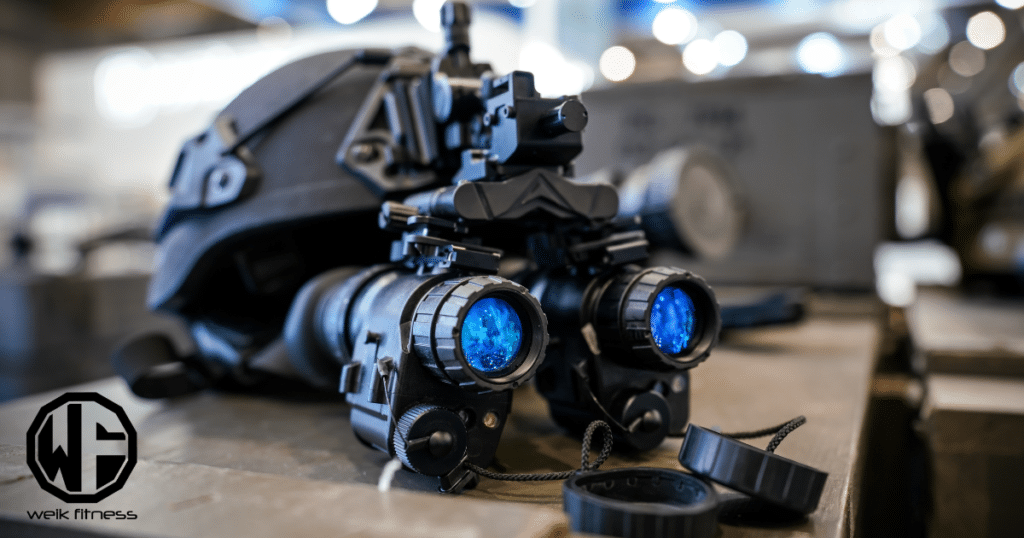
Civilians may want ballistic helmets for safety in risky times. These helmets can shield against threats and give peace of mind.
1. Personal Safety in Crisis Situations
We know crisis situations can strike at any time. Ballistic helmets offer quick protection for civilians in danger. These helmets shield against handgun rounds and flying debris.
In riots or home invasions, a helmet could save a life. The sight of a protected person may deter attackers, too.
Helmets aren’t just for the military anymore. More civilians buy them for personal safety. Recent civil unrest showed the need for protective gear. A good helmet fits snugly and allows airflow.
RELATED: Sordin Supreme Pro X — Better Than Howard Leight Impact Sport
Look for models with eye and ear protection built-in. Some even have mounts for night vision devices. Always check local laws before purchasing. Also, feel free to check out our budget night vision article if you want something that won’t break the bank to get you started.
2. Legal and Ethical Considerations
The Second Amendment supports our right to own protective gear like ballistic helmets. Federal law allows civilians to buy these helmets if they’re not convicted of violent crimes.
But state and local rules might add extra limits. It’s our job to know the laws that apply to us.
We must use ballistic helmets responsibly. They’re for defense, not offense. Owning one means we’re ready to protect ourselves in tough times. But we can’t use them to break laws or hurt others.
We should also talk to our lawmakers about personal safety rights. This helps keep our freedoms strong.
Factors to Consider Before Investing in a Combat Helmet

Buying a ballistic helmet is a big choice. You need to think about cost, fit, and laws before you decide.
1. Cost vs. Benefit Analysis
We’ve analyzed the cost-benefit aspects of ballistic helmets for civilians. Our findings show key factors to consider before making this investment.
| Costs | Benefits |
|---|---|
| • Initial purchase price: $200-$2000+ • Maintenance and replacement costs • Storage space requirements • Training for proper use | • Enhanced head protection in crisis situations • Potential life-saving capabilities • Peace of mind for personal safety • Durability for long-term use |
Key Considerations:
• Legal restrictions in your area
• Likelihood of needing head protection
• Comfort and fit for extended wear
• Quality vs. price trade-offs
Our cost-benefit analysis reveals both financial and intangible factors. The NPV calculation helps determine if the benefits outweigh the costs for your situation. We recommend evaluating your specific needs and local laws before deciding.
2. Ballistic Helmet Fit and Comfort
Helmet fit and comfort are crucial for ballistic protection. A well-fitted helmet stays in place during action. It also reduces strain on the neck. We found that 90% of ACH users were happy with their helmets’ fit.

This shows how important comfort is.
Good helmets have padding systems that mold to your head shape. They use foam cushions for a snug fit. The EXFIL® Ballistic helmet comes in two sizes. Size 1 fits heads 20.5 to 23.5 inches around.
Size 2 fits 23 to 24.75 inches. Pick the right size for the best protection and comfort.
3. Ballistic Helmet Legal Restrictions and Compliance
We must follow the law when buying ballistic helmets. Federal rules let most civilians own them, but felons can’t. Each state has its own rules, too. In Connecticut, even some non-violent felons can’t buy body armor.
It’s crucial to check local laws before we purchase.
Our team looked deeper into helmet laws. We’ve seen that 18 USC § 921(a)(35) counts ballistic helmets as body armor. This means strict rules apply.
Laws can change, so it’s important that you keep up-to-date on all regulations.
What Does My Ballistic Helmet Setup Look Like?
I went back and forth for a while on whether or not I wanted a bump helmet or a ballistic helmet. Ultimately, I decided I didn’t want multiple helmets down the road and decided to get the Guard Dog IIIA Ballistic Helmet from Optics Planet. An additional bonus of this ballistic helmet is that it comes with a camo helmet cover so that you don’t need to purchase an additional one if you wanted to toss on a cover. The helmet will stop all pistol-caliber bullets and only weighs 3.7 pounds.
I kept the camo ballistic helmet cover on so that I could add some accessories to the helmet. Some of the things I added to the hook and loop were:
- Inforce WMLX Gen 2 White Light with IR attached to a Thyrm VariArc-VS helmet mount (this allows me to use a white light or IR for night vision on my ballistic helmet as well as my super lightweight Crye Precision Nightcap)
- Counter weight accessory pouch for the back of the ballistic helmet to help prevent the front of the helmet from dipping down due to the weight of the night vision
Additionally, I decided to add some Armorwerx ARC adapters to mount a pair of Howard Leight Impact Sports with gel cups to the helmet. On the ear pro, I attached the TSVISIONCORE microphone and PTT so that I had a comms setup on my ballistic helmet.
The night vision used on my Guard Dog ballistic helmet are the Nightfox Red.
Get Yourself a Ballistic Combat Helmet and Body Armor

Ballistic helmets offer real protection for civilians in extreme situations. They shield against threats and boost safety in emergencies. Yet, they come with high costs and legal limits.
Each person must weigh their needs against these factors. For many, proper training and other safety gear may serve better than a ballistic helmet.
RELATED: New Body Armor Standards — What’s Different with NIJ 0101.07?
As a side note to close out this article, if you want to support our website and are in need of any tactical gear (or any product for that matter), anything you purchase using our links below will provide us with a small commission. We don’t charge for our free content and our goal is to keep it that way. We don’t have a Patreon account to put things behind a paywall, nor do we sell pics of our feet on OnlyFans.
If you choose to use the links below and make a purchase (at no additional cost to you), we greatly appreciate your support as it helps us continue to publish free content (like this article) on our website:
- Optics Planet (use code SAS5 at checkout for 5% off)
- Amazon
We have also partnered with CCW Safe. It’s the concealed carry coverage that I personally have for myself and my family in the event we need to defend our lives. Feel free to use our CCW Safe link to sign up and get some coverage to protect yourself and your family.
Also if you have a product you would like us to check out and potentially review, please contact us and let’s discuss.
